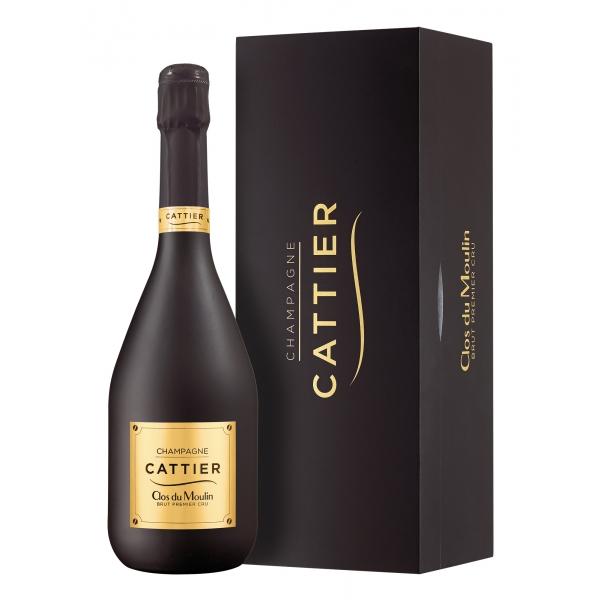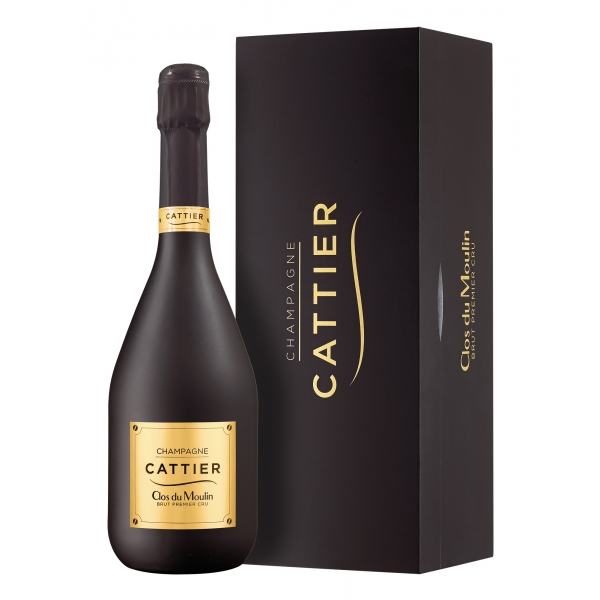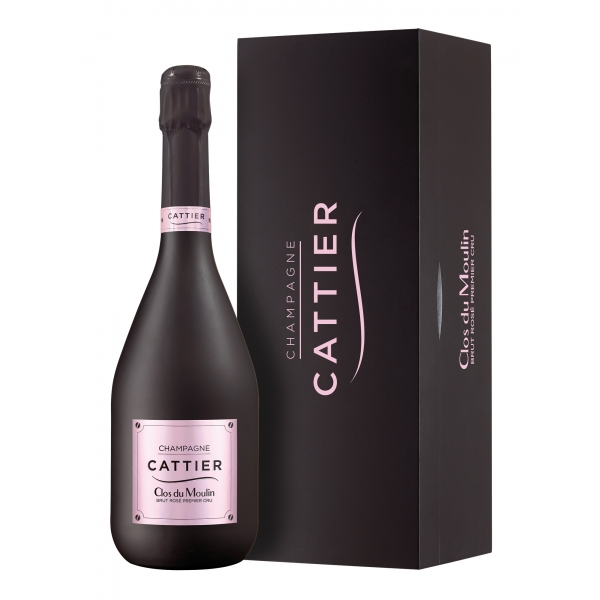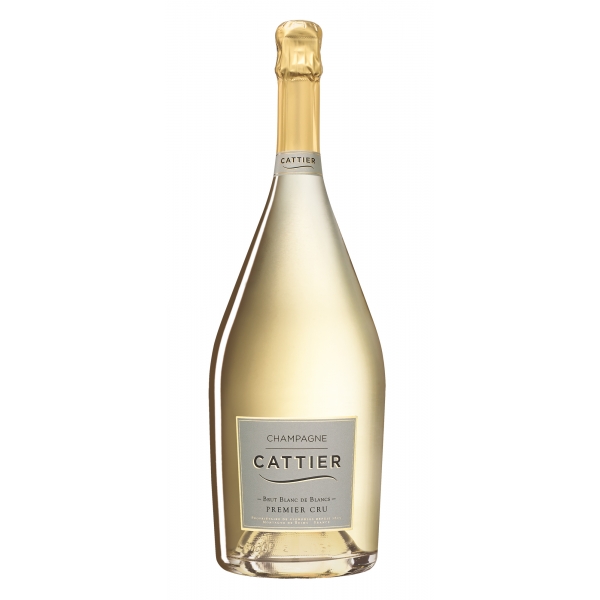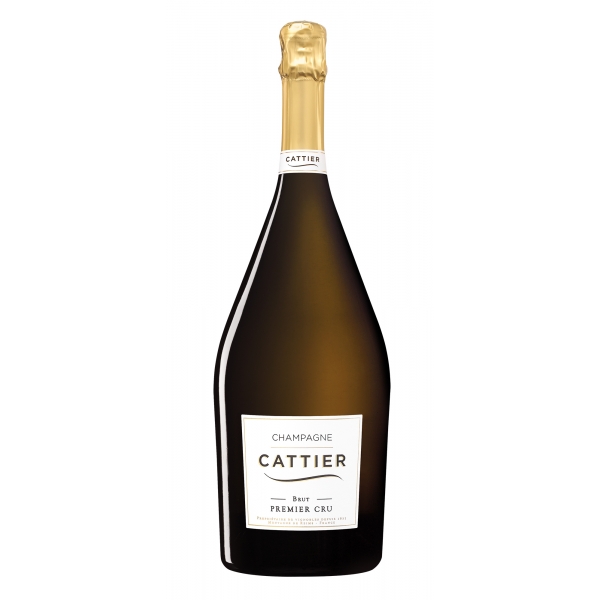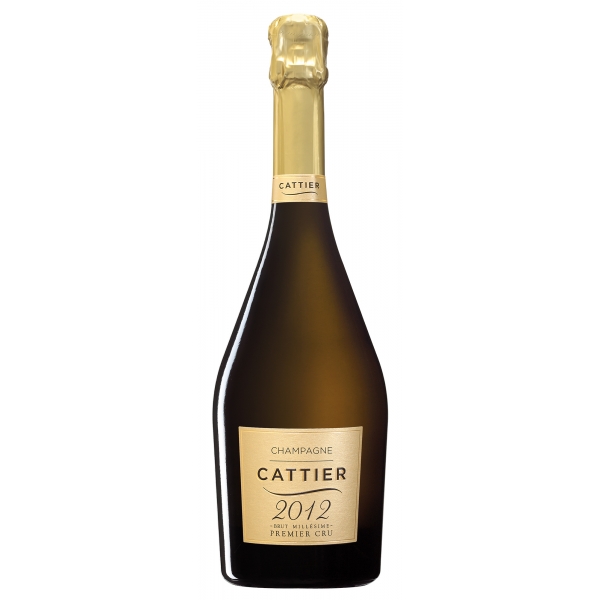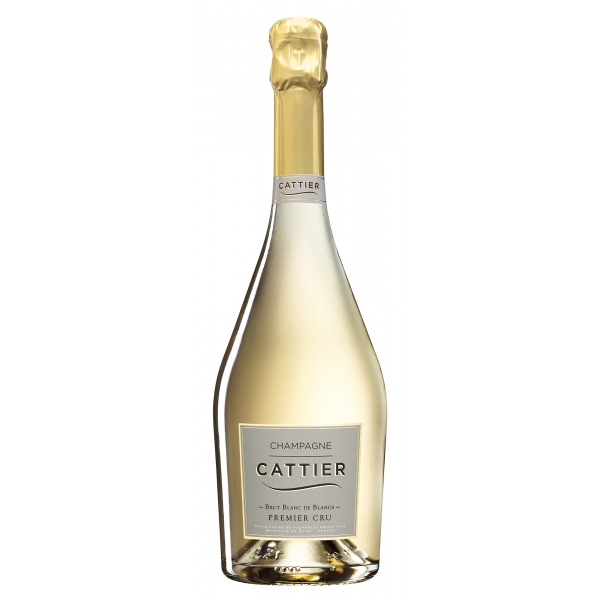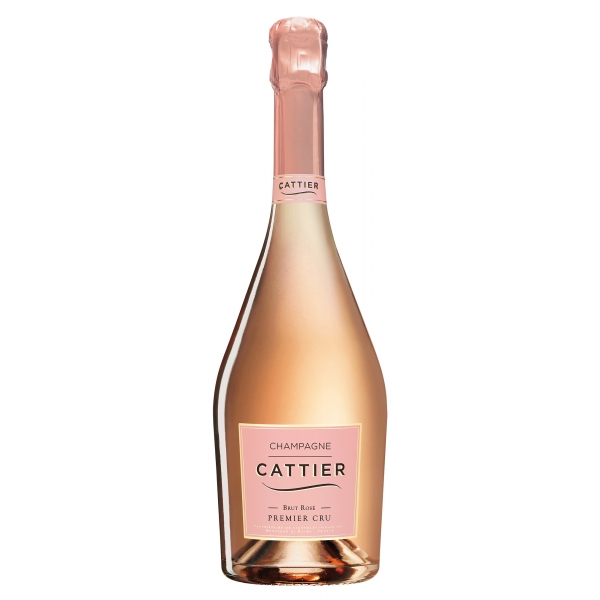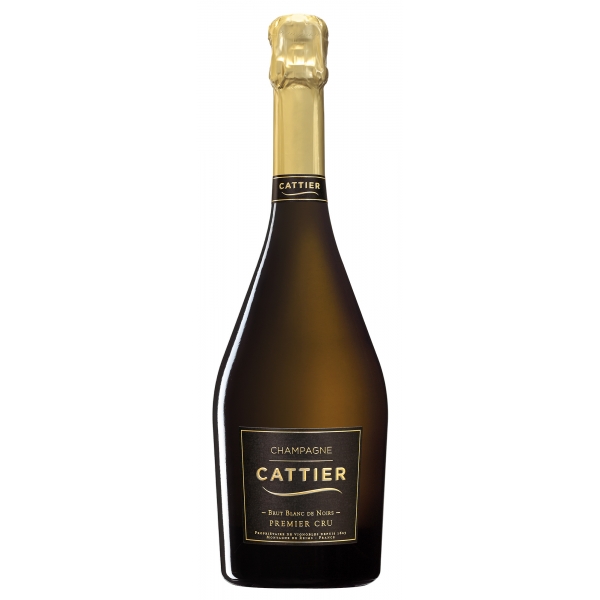No products
Categories
- Fashion Accessories
- Clothing
- Beauty & Lifestyle
-
Hi-Tech & Lifestyle
- Gaming
-
Case
- iPhone 11 Pro
- iPhone 11 Pro Max
- iPhone 11
- iPhone X / XS
- iPhone XS Max
- Samsung S10 / S10+ / S10e
- Huawei P30 / P30 Pro / P30 Lite
- Huawei P20 / P20 Pro / P20 Lite
- iPhone XR
- Samsung S9
- Samsung S9+
- iPhone 8 / 7
- iPhone 8 Plus / 7 Plus
- Samsung S8
- Samsung S8+
- Samsung S7
- Samsung S7 Edge
- iPhone 6 / 6 s
- iPhone 6 Plus / 6 s Plus
- iPhone 5 / SE
- Skin
- Audio
- Smart Home
- Drones & Hoverboard
- Photo & Video
- Desk Supplies
- Accessories
- Games
- Beverages
- Food
- Home
- Jewelry
- Luxury
- Travel
- Art
- Footwear
- Vintage Fashion
- Restaurants
- Sport
- Animals
- Gift Ideas
- Kidswear
Extra
Champagne Cattier
Independent Family and Maison de Champagne d'Exception since 1625
.jpg)
Some grapes are destined for far more than just an ordinary champagne...
Keeping The Passion in The Family for Almost 400 Years
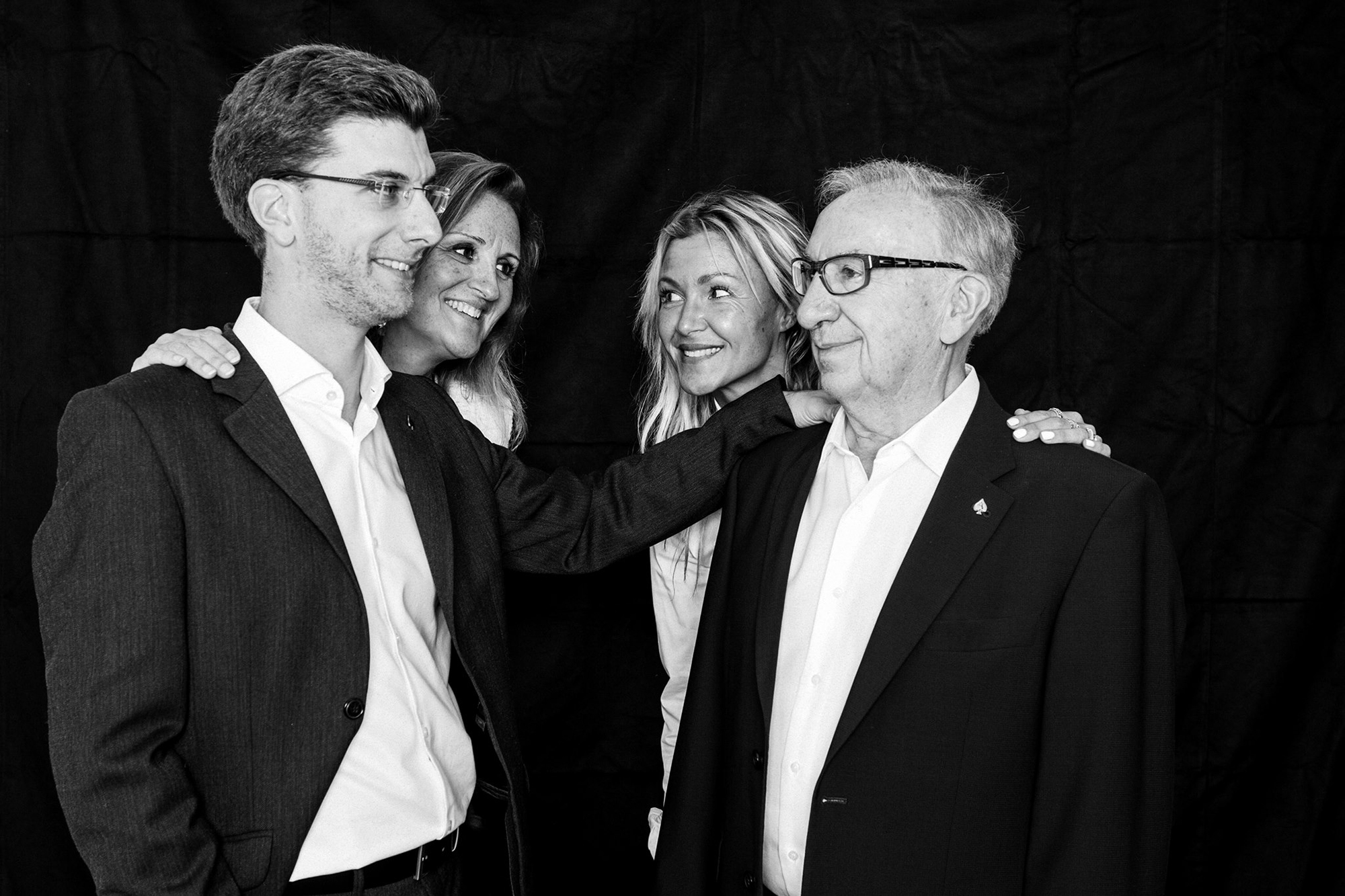
The story goes back all the way to 1625, and probably even further, when the Cattier family first started planting vines in Chigny-les-Roses, in the hear t of the Montagne de Reims.
Fast-forward to 1916, when Jean Cattier returned to Chigny-les-Roses as a wounded veteran of the Great War. The city of Reims was under siege by the German Army, shaken by an onslaught of artillery shells which would destroy 60% of the city. Champagne traders tried to keep their businesses running under these harsh conditions, but it was an uphill struggle. Unable to sell his poor harvest in 1916, Jean Cattier decided to turn his grapes into wine and produce his own champagne, released at the end of the war in 1918. This signalled the birth of Cattier champagne.
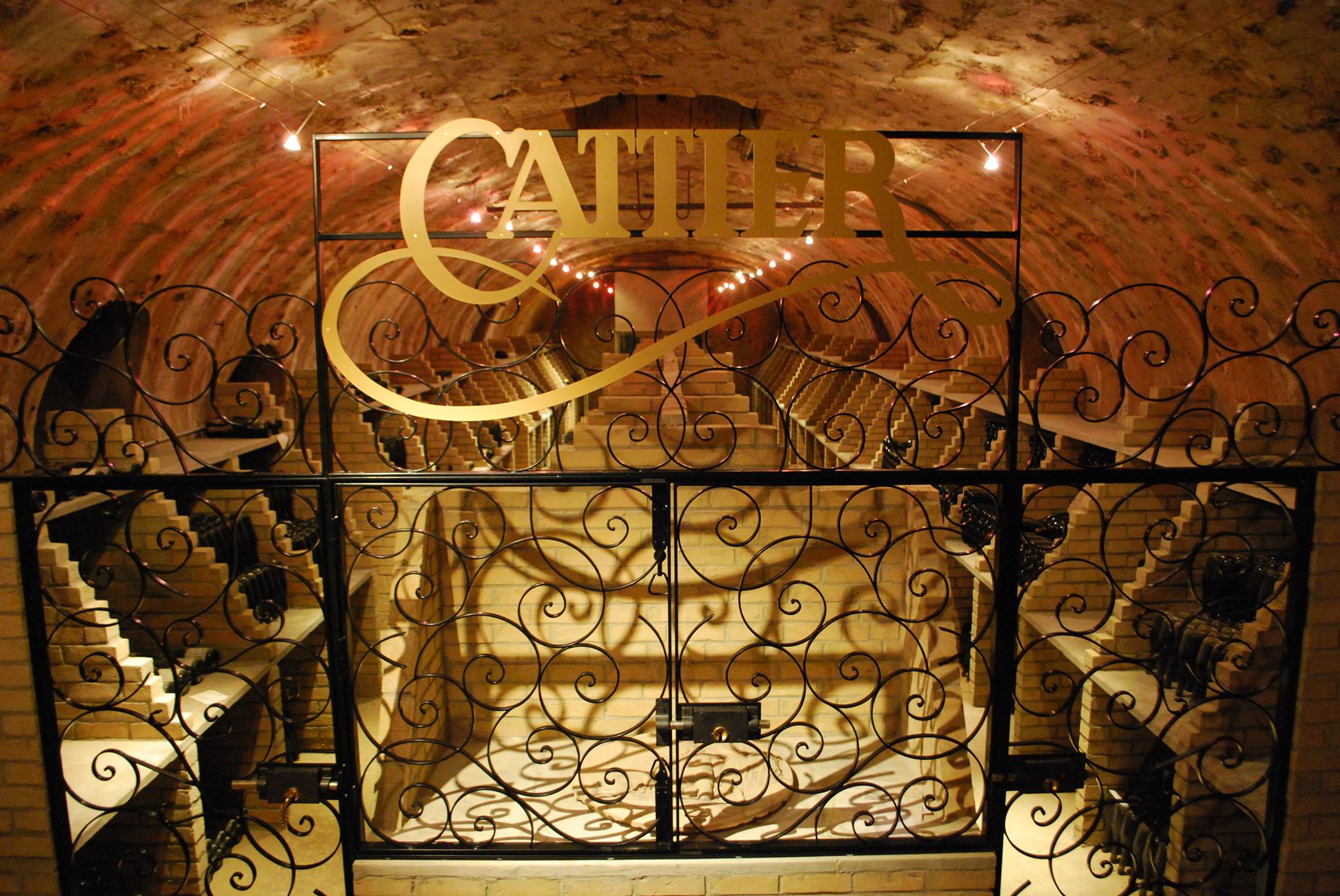
In 1936, his son Jean Cattier married Nelly Adam. They went on to have three children, Jean-Louis, Liliane and Jean-Jacques. They worked to build up the business and pass onto their children both their passion for champagne and a flourishing company.
At the beginning of the 1960’s, Jean-Louis took over the vines. A little later, in 1971, his oenologist brother Jean-Jacques took the reins in the winery before later taking charge of the administrative and sales side of the company. In 1950, Jean Cattier purchased the Clos du Moulin, one of the very few historic enclosed (“Clos”) vineyards in the region (along with the Clos des Goisses). Their first harvest in the new vineyard came in 1951, which was bottled in 1952 and released onto the market in 1956. This was a pioneering moment in the history of champagne, with one of the first ever single-vineyard Clos champagnes.
.jpg)
In 2011, Alexandre Cattier, became the thirteenth generation of Cattiers to work the vines and the fourth to produce their own champagne when he took the reins of the company, alongside his cousin Agathe, who became the Assistant Managing Director, and Marie, the new brand ambassador.
Under the guidance of Jean-Jacques Cattier, Cattier Champagne has flourished through the hard work, courage and audacity of the men and women in the family. Driven by their passion for wine and the land they work, each has helped make Cattier the brand it is today, dedicated to preserving and passing on the excellence we have inherited.
Key Moments in Our History
.jpg)
The family began to work their vineyard in Chigny-les-Roses, a charming little village in the Montagne de Reims.
1918
.jpg)
Jean Cattier (Senior) began selling his very first bottles of champagne. Wounded during the First World War, Jean returned to the family estate to tend the vines, turn his grapes into wine and sell his first bottles at the end of the war. What an icon!
1936
s.jpg)
Jean Cattier (Junior) married Nelly Adam. They took over the company and had three children: Jean-Louis, Liliane and Jean-Jacques.
1945
_2.jpg)
After the war, the couple formed a formidable team and spectacularly expanded the business. Jean oversaw the vines and the winery, while Nelly handled the management and sales side.
1950
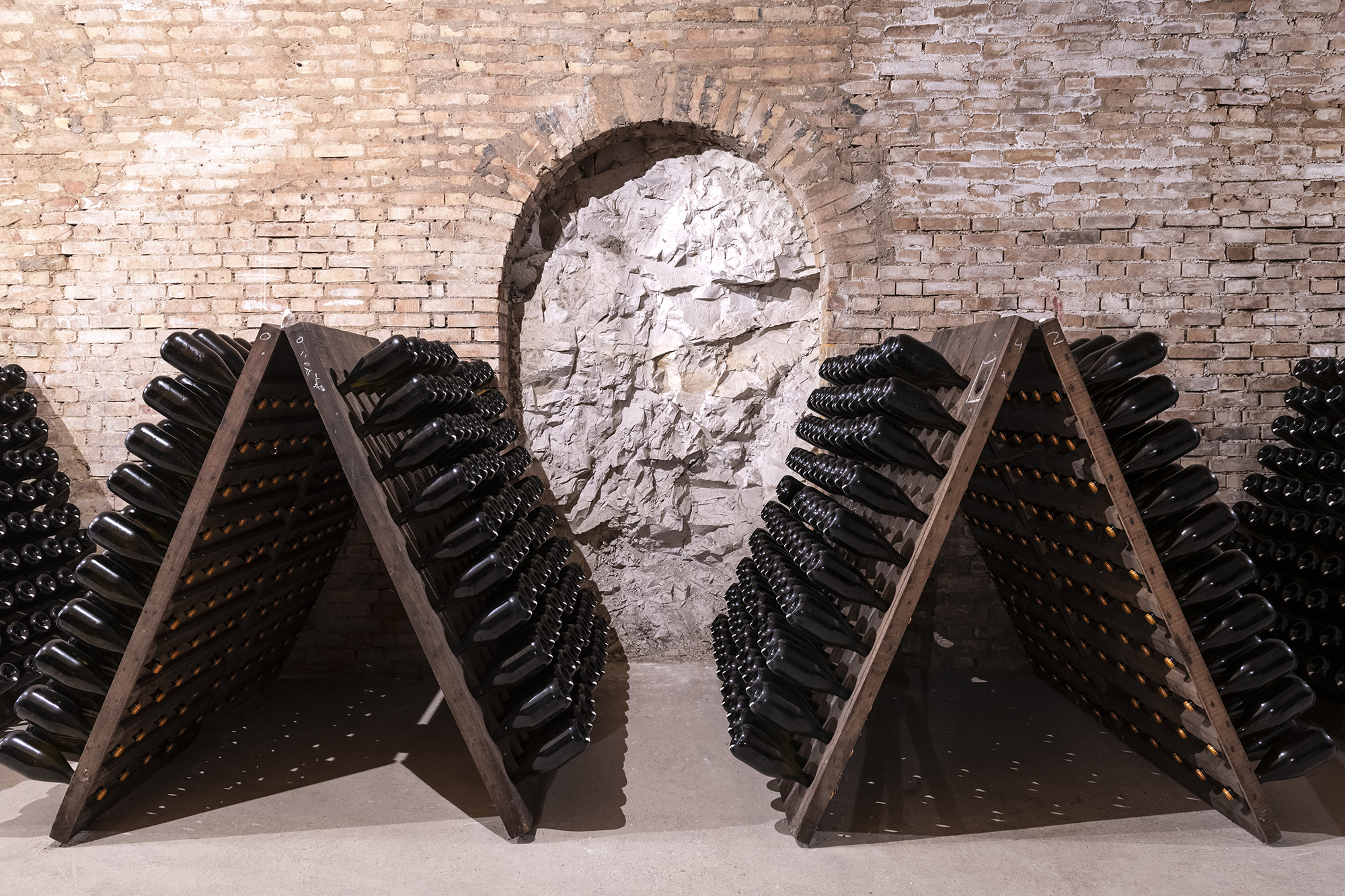
Jean purchased the Clos du Moulin vineyard. Right from the very first harvest, he had the foresight to treat these grapes separately and create this first single-vineyard champagne, the “Clos du Moulin”.
1962
_3.jpg)
Nelly and Jean bought a property in the neighbouring village of Rilly-la-Montagne, which came with an impressive cellar measuring 30m deep, built over three levels.
1967
_1.jpg)
In the 1950’s and ‘60’s, Cattier Champagne became the largest independent producer in the region and the first, in 1967, to produce 100,000 bottles in one year.
1971
.jpg)
After graduating in oenology from the Science University in Reims, Jean-Jacques came back to the family estate. He would later go on to take over as director.
1980
_1.jpg)
A turning point for Cattier, with the development of the company’s export business.
2006
%20Maccarons.jpg)
Launch of a new brand, the Armand de Brignac, positioned as one of the most prestigious flagship bottles in Champagne. With a ground-breaking concept and presentation, it was crowned “the best champagne in the world” in 2010 by the international Fine Champagne Magazine.
2011
.jpg)
Alexandre, following in the footsteps of his father Jean-Jacques, became a certified oenologist and took the reins of the company after eight years on the estate. Working with his cousins Agathe and Marie, the respective daughters of Liliane and Jean Louis, the family business (and 12 generations of skill, expertise and tradition) is certainly in good hands!
2018
_1.jpg)
Cattier Champagne celebrated its one hundredth birthday.
Our Jealously Guarded Premier Cru Estate
_1.jpg)
The Champagne wine region includes 320 villages, 17 of which are labelled Grand Cru and 42 are Premier Cru. These prestigious villages are located in the historic centre of Champagne: the Montagne de Reims, the Côte des Blancs and the Vallée de la Marne. Grand Cru and Premier Cru represent known and renowned terroirs which are highly prized by cellar-masters. They are appreciated for their finesse, their delicacy and the consistent high quality.
Our vines are mostly in and around Chigny-les-Roses, Ludes and Rilly-la-Montagne, right in the heart of the Montagne de Reims and surrounded by the region’s Premier and Grand Cru vineyards. The family’s vineyards cover some 33 hectares, which have been built up and developed by the family over the generations. When you are lucky enough to own an estate as precious as this, it is your duty to give it the care it deserves. That is why a team of ten people tend the vines all year long, ensuring that the vines produce the finest possible grapes which are picked at the perfect moment.
_2.jpg)
The team takes great care when ploughing the soil around the vines, paying special attention to the historic Clos du Moulin - where they do it the old-fashioned way, with a horse-pulled plough.
Since the mid-1990’s, we have made it a priority to take a more ethical, environmental approach to how we tend the wines. This painstaking approach was quickly rewarded by the Ampelos certification, then by a level three (the highest possible) HVE label for environmental quality. Lastly, in 2017, we were awarded the VDC label for sustainable production in Champagne.
The renown and prestige of our wines are a direct result of three factors : the quality of our soil, the skill expertise and eye for perfection of our manager and cellar-master, Alexandre Cattier, and his team. This is reflected in a plethora of awards for our champagnes in greatest national and international competition.
Respect for Our Vineyard
_1.jpg)
Champagne represents the very highest level of excellence in sparkling wine. We owe it to ourselves to maintain this standard at every step of the process, especially in terms of how we tend our vines. Indeed, one of our top priorities is maintaining an ethical, respectful relationship with the earth we rely on.
The company has been focused on this aspect of the craft for a generation. Our vineyards were awarded the “Ampélos” certification in the 1990’s, a label created by winemakers who prioritised a respect for native plants and animals.
.jpg)
Next came the new HVE (High Environmental Quality) certification in 2012, governed by the Ministry of Agriculture. We took on this challenge and the new set of constraints it imposed on our vineyards, finally achieving the highest HVE standard (level 3) in April 2015. There are currently 248 farms and vineyards in Champagne-Ardennes with HVE certification, out of tens of thousands. Moreover, only 335 of the 20,000 wines estates have received our sustainable viticulture label.
As the government was drawing up its HVE certification, the Champagne producers’ association was developing another: the “sustainable viticulture in Champagne” label. We are proud and delighted to say that we were awarded this label shortly after receiving a level 3 HVE cer tification. There are currently very few champagne producers who have made the environment such a high priority. We’re proud to be pioneering such an ethical approach!
Deep in The Heart of Our Cellars
.jpg)
Most of Cattier’s cellars are located underneath the family estate in Rilly-la-Montagne, where we can store some two million bottles. These cellars are more than a century and a half old, and still bear the traces of those who sheltered there to escape the bombs of the Second World War. During the height of the Cold War in the 1960’s, the country’s most senior generals came to visit the cellars. In the event of a nuclear war, they could have been requisitioned and turned into a bomb shelter. Thankfully, they were never needed for this kind of work!
.jpg)
With 119 steps on one side and 136 on the other, these cellars are among the deepest in Champagne (almost 30 metres deep). Cellar depth has traditionally been measured in steps, a holdover from the days when builders didn’t have any more advanced ways of measuring it. What’s more, they were excavated over three different levels, with three distinct styles of arch: Gothic, Roman and Renaissance. These cellars provide the perfect conditions for bottles to mature: a constant temperature and protection from any disturbance. We like to make the most of it. This is why our Brut Premier Cru spends more than four years down there, even though the legislation only requires 15 months. Our most prestigious bottles, however, require more than 8 years resting in the cellar to open and develop their unique aromas.
A Unique Concept for Champagne
.jpg)
Cattier has always worked hard to create champagnes which set them apart from other producers. It is also one of the very rare estates to produce a full range of Premier Cru champagnes. Among the three varieties traditionally used in champagne, the estate places special emphasis on Pinot Noir and Pinot Meunier, which add structure and fruit-forward aromas. The third, Chardonnay, provides the finesse and elegance. We’ve always kept a quantity of wine in reserve, and incorporate at least 30% older wine in our non-vintage champagnes. This is what helps preserve Cattier’s iconic, elegant and fruit-forward style.
Le Clos Du Moulin - 1 Plot, 2 Grape Varieties, 3 Vintages
.jpg)
Enclosed vineyards, or “Clos”, are much rarer in Champagne than they are in other wine regions. The Clos du Moulin can trace its origins back to the 18th century. The plot was owned by Allart de Maisonneuve, an officer to King Louis XV and one of the first producers of champagne as we know it. In the middle of the vines, there used to be a windmill - or “moulin” - which gave its name to the plot. Unfortunately, it did not survive the ravages of time or war, and there remains only a few postcard pictures, a fragment of wall running along the road and the name on our bottles of champagne. In 1950, Jean Cattier purchased this magnificent 2.2 hectare plot in 1950, planted half with pinot noir and half with chardonnay. Upon its first harvest by the family in 1951, the harvests were separated by year and by variety to create the very first bottles of Clos du Moulin, which were released in 1956. Now a blend of 3 different vintages, the Clos du Moulin needs more than 8 years’ ageing in the cellar to develop its remarkable complexity before it can be released. Each bottle produced has its own unique number.
.jpg)
Products Champagne Cattier
Champagne Cattier
Independent Family and Maison de Champagne d'Exception since 1625
.jpg)
Some grapes are destined for far more than just an ordinary champagne...
Keeping The Passion in The Family for Almost 400 Years

The story goes back all the way to 1625, and probably even further, when the Cattier family first started planting vines in Chigny-les-Roses, in the hear t of the Montagne de Reims.
Fast-forward to 1916, when Jean Cattier returned to Chigny-les-Roses as a wounded veteran of the Great War. The city of Reims was under siege by the German Army, shaken by an onslaught of artillery shells which would destroy 60% of the city. Champagne traders tried to keep their businesses running under these harsh conditions, but it was an uphill struggle. Unable to sell his poor harvest in 1916, Jean Cattier decided to turn his grapes into wine and produce his own champagne, released at the end of the war in 1918. This signalled the birth of Cattier champagne.

In 1936, his son Jean Cattier married Nelly Adam. They went on to have three children, Jean-Louis, Liliane and Jean-Jacques. They worked to build up the business and pass onto their children both their passion for champagne and a flourishing company.
At the beginning of the 1960’s, Jean-Louis took over the vines. A little later, in 1971, his oenologist brother Jean-Jacques took the reins in the winery before later taking charge of the administrative and sales side of the company. In 1950, Jean Cattier purchased the Clos du Moulin, one of the very few historic enclosed (“Clos”) vineyards in the region (along with the Clos des Goisses). Their first harvest in the new vineyard came in 1951, which was bottled in 1952 and released onto the market in 1956. This was a pioneering moment in the history of champagne, with one of the first ever single-vineyard Clos champagnes.
.jpg)
In 2011, Alexandre Cattier, became the thirteenth generation of Cattiers to work the vines and the fourth to produce their own champagne when he took the reins of the company, alongside his cousin Agathe, who became the Assistant Managing Director, and Marie, the new brand ambassador.
Under the guidance of Jean-Jacques Cattier, Cattier Champagne has flourished through the hard work, courage and audacity of the men and women in the family. Driven by their passion for wine and the land they work, each has helped make Cattier the brand it is today, dedicated to preserving and passing on the excellence we have inherited.
Key Moments in Our History
.jpg)
The family began to work their vineyard in Chigny-les-Roses, a charming little village in the Montagne de Reims.
1918
.jpg)
Jean Cattier (Senior) began selling his very first bottles of champagne. Wounded during the First World War, Jean returned to the family estate to tend the vines, turn his grapes into wine and sell his first bottles at the end of the war. What an icon!
1936
s.jpg)
Jean Cattier (Junior) married Nelly Adam. They took over the company and had three children: Jean-Louis, Liliane and Jean-Jacques.
1945
_2.jpg)
After the war, the couple formed a formidable team and spectacularly expanded the business. Jean oversaw the vines and the winery, while Nelly handled the management and sales side.
1950

Jean purchased the Clos du Moulin vineyard. Right from the very first harvest, he had the foresight to treat these grapes separately and create this first single-vineyard champagne, the “Clos du Moulin”.
1962
_3.jpg)
Nelly and Jean bought a property in the neighbouring village of Rilly-la-Montagne, which came with an impressive cellar measuring 30m deep, built over three levels.
1967
_1.jpg)
In the 1950’s and ‘60’s, Cattier Champagne became the largest independent producer in the region and the first, in 1967, to produce 100,000 bottles in one year.
1971
.jpg)
After graduating in oenology from the Science University in Reims, Jean-Jacques came back to the family estate. He would later go on to take over as director.
1980
_1.jpg)
A turning point for Cattier, with the development of the company’s export business.
2006
%20Maccarons.jpg)
Launch of a new brand, the Armand de Brignac, positioned as one of the most prestigious flagship bottles in Champagne. With a ground-breaking concept and presentation, it was crowned “the best champagne in the world” in 2010 by the international Fine Champagne Magazine.
2011
.jpg)
Alexandre, following in the footsteps of his father Jean-Jacques, became a certified oenologist and took the reins of the company after eight years on the estate. Working with his cousins Agathe and Marie, the respective daughters of Liliane and Jean Louis, the family business (and 12 generations of skill, expertise and tradition) is certainly in good hands!
2018
_1.jpg)
Cattier Champagne celebrated its one hundredth birthday.
Our Jealously Guarded Premier Cru Estate
_1.jpg)
The Champagne wine region includes 320 villages, 17 of which are labelled Grand Cru and 42 are Premier Cru. These prestigious villages are located in the historic centre of Champagne: the Montagne de Reims, the Côte des Blancs and the Vallée de la Marne. Grand Cru and Premier Cru represent known and renowned terroirs which are highly prized by cellar-masters. They are appreciated for their finesse, their delicacy and the consistent high quality.
Our vines are mostly in and around Chigny-les-Roses, Ludes and Rilly-la-Montagne, right in the heart of the Montagne de Reims and surrounded by the region’s Premier and Grand Cru vineyards. The family’s vineyards cover some 33 hectares, which have been built up and developed by the family over the generations. When you are lucky enough to own an estate as precious as this, it is your duty to give it the care it deserves. That is why a team of ten people tend the vines all year long, ensuring that the vines produce the finest possible grapes which are picked at the perfect moment.
_2.jpg)
The team takes great care when ploughing the soil around the vines, paying special attention to the historic Clos du Moulin - where they do it the old-fashioned way, with a horse-pulled plough.
Since the mid-1990’s, we have made it a priority to take a more ethical, environmental approach to how we tend the wines. This painstaking approach was quickly rewarded by the Ampelos certification, then by a level three (the highest possible) HVE label for environmental quality. Lastly, in 2017, we were awarded the VDC label for sustainable production in Champagne.
The renown and prestige of our wines are a direct result of three factors : the quality of our soil, the skill expertise and eye for perfection of our manager and cellar-master, Alexandre Cattier, and his team. This is reflected in a plethora of awards for our champagnes in greatest national and international competition.
Respect for Our Vineyard
_1.jpg)
Champagne represents the very highest level of excellence in sparkling wine. We owe it to ourselves to maintain this standard at every step of the process, especially in terms of how we tend our vines. Indeed, one of our top priorities is maintaining an ethical, respectful relationship with the earth we rely on.
The company has been focused on this aspect of the craft for a generation. Our vineyards were awarded the “Ampélos” certification in the 1990’s, a label created by winemakers who prioritised a respect for native plants and animals.
.jpg)
Next came the new HVE (High Environmental Quality) certification in 2012, governed by the Ministry of Agriculture. We took on this challenge and the new set of constraints it imposed on our vineyards, finally achieving the highest HVE standard (level 3) in April 2015. There are currently 248 farms and vineyards in Champagne-Ardennes with HVE certification, out of tens of thousands. Moreover, only 335 of the 20,000 wines estates have received our sustainable viticulture label.
As the government was drawing up its HVE certification, the Champagne producers’ association was developing another: the “sustainable viticulture in Champagne” label. We are proud and delighted to say that we were awarded this label shortly after receiving a level 3 HVE cer tification. There are currently very few champagne producers who have made the environment such a high priority. We’re proud to be pioneering such an ethical approach!
Deep in The Heart of Our Cellars
.jpg)
Most of Cattier’s cellars are located underneath the family estate in Rilly-la-Montagne, where we can store some two million bottles. These cellars are more than a century and a half old, and still bear the traces of those who sheltered there to escape the bombs of the Second World War. During the height of the Cold War in the 1960’s, the country’s most senior generals came to visit the cellars. In the event of a nuclear war, they could have been requisitioned and turned into a bomb shelter. Thankfully, they were never needed for this kind of work!
.jpg)
With 119 steps on one side and 136 on the other, these cellars are among the deepest in Champagne (almost 30 metres deep). Cellar depth has traditionally been measured in steps, a holdover from the days when builders didn’t have any more advanced ways of measuring it. What’s more, they were excavated over three different levels, with three distinct styles of arch: Gothic, Roman and Renaissance. These cellars provide the perfect conditions for bottles to mature: a constant temperature and protection from any disturbance. We like to make the most of it. This is why our Brut Premier Cru spends more than four years down there, even though the legislation only requires 15 months. Our most prestigious bottles, however, require more than 8 years resting in the cellar to open and develop their unique aromas.
A Unique Concept for Champagne
.jpg)
Cattier has always worked hard to create champagnes which set them apart from other producers. It is also one of the very rare estates to produce a full range of Premier Cru champagnes. Among the three varieties traditionally used in champagne, the estate places special emphasis on Pinot Noir and Pinot Meunier, which add structure and fruit-forward aromas. The third, Chardonnay, provides the finesse and elegance. We’ve always kept a quantity of wine in reserve, and incorporate at least 30% older wine in our non-vintage champagnes. This is what helps preserve Cattier’s iconic, elegant and fruit-forward style.
Le Clos Du Moulin - 1 Plot, 2 Grape Varieties, 3 Vintages
.jpg)
Enclosed vineyards, or “Clos”, are much rarer in Champagne than they are in other wine regions. The Clos du Moulin can trace its origins back to the 18th century. The plot was owned by Allart de Maisonneuve, an officer to King Louis XV and one of the first producers of champagne as we know it. In the middle of the vines, there used to be a windmill - or “moulin” - which gave its name to the plot. Unfortunately, it did not survive the ravages of time or war, and there remains only a few postcard pictures, a fragment of wall running along the road and the name on our bottles of champagne. In 1950, Jean Cattier purchased this magnificent 2.2 hectare plot in 1950, planted half with pinot noir and half with chardonnay. Upon its first harvest by the family in 1951, the harvests were separated by year and by variety to create the very first bottles of Clos du Moulin, which were released in 1956. Now a blend of 3 different vintages, the Clos du Moulin needs more than 8 years’ ageing in the cellar to develop its remarkable complexity before it can be released. Each bottle produced has its own unique number.
.jpg)
Products Champagne Cattier
-
Champagne Cattier - Clos Du Moulin - Brut Premier Cru - Mathusalem - Box -...
Elegant and Complex. Covering just 2.2 hectares, the Clos du Moulin is one of Champagne’s two historic walled vineyards and is located on the sunny slopes of the Montagne de Reims near Chigny-les-Roses. The expert team at Cattier has taken three vintages, selected for their ability to age gracefully, and blended them into a wine which reflects their...
538,00 € -
Champagne Cattier - Clos Du Moulin - Brut Premier Cru - Jéroboam - Box -...
Elegant and Complex. Covering just 2.2 hectares, the Clos du Moulin is one of Champagne’s two historic walled vineyards and is located on the sunny slopes of the Montagne de Reims near Chigny-les-Roses. The expert team at Cattier has taken three vintages, selected for their ability to age gracefully, and blended them into a wine which reflects their...
230,00 € -
Champagne Cattier - Clos Du Moulin - Brut Rosé Premier Cru - Magnum - Box -...
Rich and fresh. Covering just 2.2 hectares, the Clos du Moulin is one of Champagne’s two historic walled vineyards and is located on the sunny slopes of the Montagne de Reims near Chigny-les-Roses. The expert team at Cattier has taken three vintages, selected for their ability to age gracefully, and blended them into a wine which reflects their unique...
134,00 € -
Champagne Cattier - Clos Du Moulin - Brut Premier Cru - Magnum - Box - Pinot...
Elegant and Complex. Covering just 2.2 hectares, the Clos du Moulin is one of Champagne’s two historic walled vineyards and is located on the sunny slopes of the Montagne de Reims near Chigny-les-Roses. The expert team at Cattier has taken three vintages, selected for their ability to age gracefully, and blended them into a wine which reflects their...
123,50 € -
Champagne Cattier - Brut Blanc de Blancs - Premier Cru - Magnum - Luxury...
Fresh and silky. The Cuvée Blanc de Blancs Premier Cru is Cattier’s most iconic champagne. It is made solely from our nine favourite villages (mostly Ludes, Chigny-les-Roses and Rillyla-Montagne). A faithful reflection of its terroir, the Cuvée Blanc de Blancs Cattier is characterised by its fresh, fruit-forward personality and well-rounded finish.
132,00 € -
Champagne Cattier - Brut Rosé - Premier Cru - Magnum - Luxury Limited Edition...
Gourmand and warm. Made by adding red wine to the blend, the Brut Rosé Premier Cru reflects the quality of the Montagne de Reims’ pinot varieties and their stunning aromatic complexity. This champagne is a pure distillation of elegance and intensity.
108,00 € -
Champagne Cattier - Brut - Premier Cru - Magnum - Luxury Limited Edition - 1,5 l
Generous and fruity. Made from a pinot-heavy blend in our nine favourite villages (mostly Ludes, Chignyles- Roses and Rilly-la-Montagne), the Cuvée Brut Premier Cru is the purest refl ection of Cattier’s winemaking style. Made primarily from pinot meunier, it is characterised by its elegance, generosity and intense fruit-forward personality.
89,00 € -
Champagne Cattier - Brut Millésime - Premier Cru - Luxury Limited Edition -...
Elegant and Complex. Covering just 2.2 hectares, the Clos du Moulin is one of Champagne’s two historic walled vineyards and is located on the sunny slopes of the Montagne de Reims near Chigny-les-Roses. The expert team at Cattier has taken three vintages, selected for their ability to age gracefully, and blended them into a wine which reflects their...
71,00 € -
Champagne Cattier - Brut Blanc de Blancs - Premier Cru - Luxury Limited...
Fresh and silky. The Cuvée Blanc de Blancs Premier Cru is Cattier’s most iconic champagne. It is made solely from our nine favourite villages (mostly Ludes, Chigny-les-Roses and Rillyla-Montagne). A faithful reflection of its terroir, the Cuvée Blanc de Blancs Cattier is characterised by its fresh, fruit-forward personality and well-rounded finish.
62,70 € -
Champagne Cattier - Brut Rosé - Premier Cru - Luxury Limited Edition - 750 ml
Gourmand and warm. Made by adding red wine to the blend, the Brut Rosé Premier Cru reflects the quality of the Montagne de Reims’ pinot varieties and their stunning aromatic complexity. This champagne is a pure distillation of elegance and intensity.
52,80 € -
Champagne Cattier - Brut Blanc de Noirs - Premier Cru - Luxury Limited...
Gourmand and roomy. The Cattier Blanc de Noirs is made from a 100 % pinot blend. This champagne, made primarily from pinot meunier grown on the Montagne de Reims, is the embodiment of classical champagne and Cattier’s house style. The large proportion of older wine and long stay in the cellar gives this champagne a remarkable aromatic complexity.
52,80 € -
Champagne Cattier - Brut Nature - Zéro Dosage - Premier Cru - Luxury Limited...
Strong and elegant. Made from a pinot-heavy blend in our nine favourite villages (mostly Ludes, Chignyles- Roses and Rilly-la-Montagne), the Cuvé Brut Nature Premier Cru is the essence of purity. It is a true reflection of the immense quality of Cattier’s grapes and our skill in the winery. A true product of its exceptional terroir, it is characterised by...
52,80 € -
Champagne Cattier - Brut - Premier Cru - Magnum - Luxury Limited Edition -...
Generous and fruity. Made from a pinot-heavy blend in our nine favourite villages (mostly Ludes, Chignyles- Roses and Rilly-la-Montagne), the Cuvée Brut Premier Cru is the purest refl ection of Cattier’s winemaking style. Made primarily from pinot meunier, it is characterised by its elegance, generosity and intense fruit-forward personality.
42,90 €



